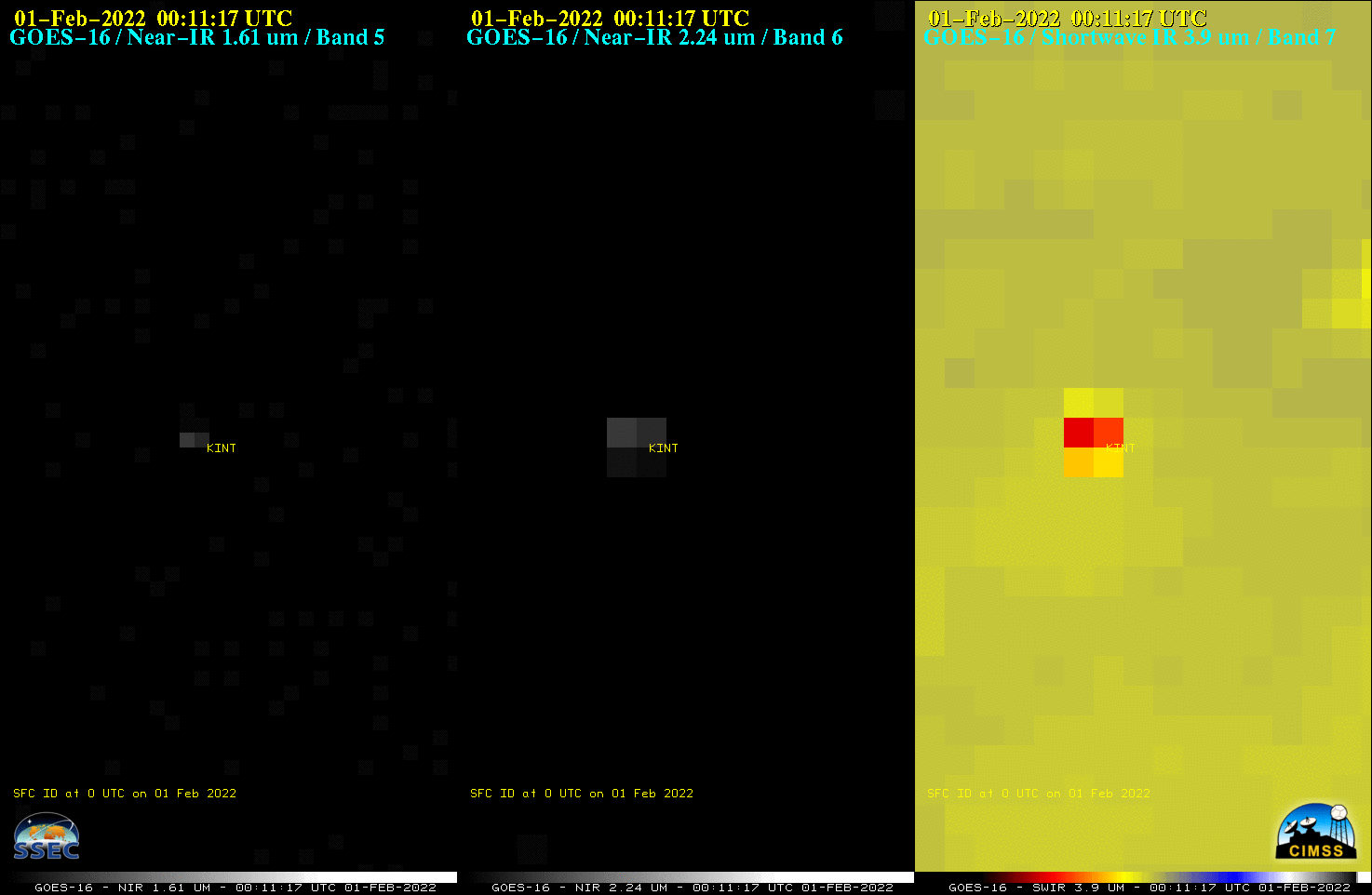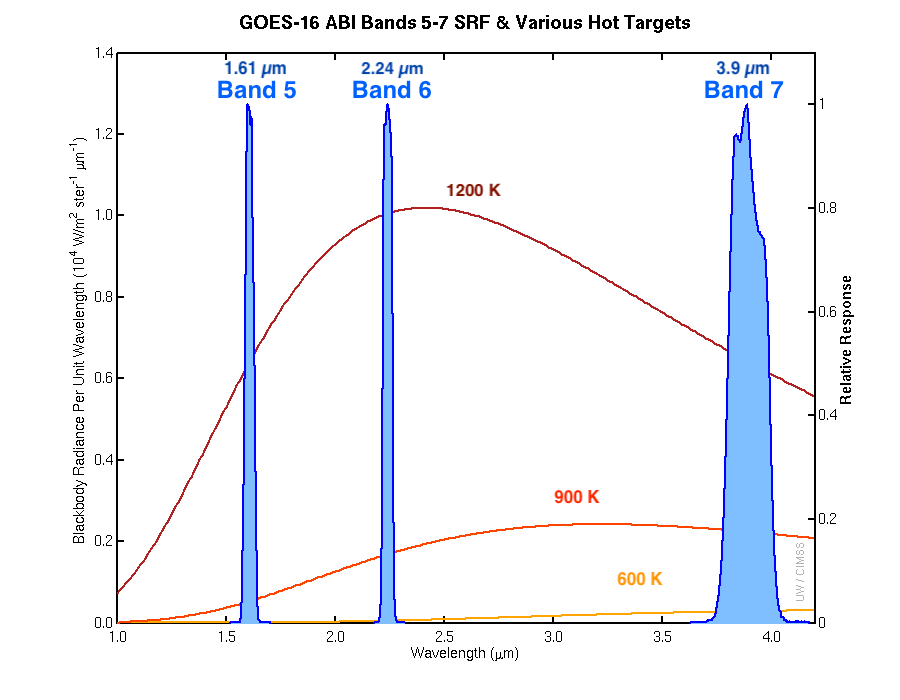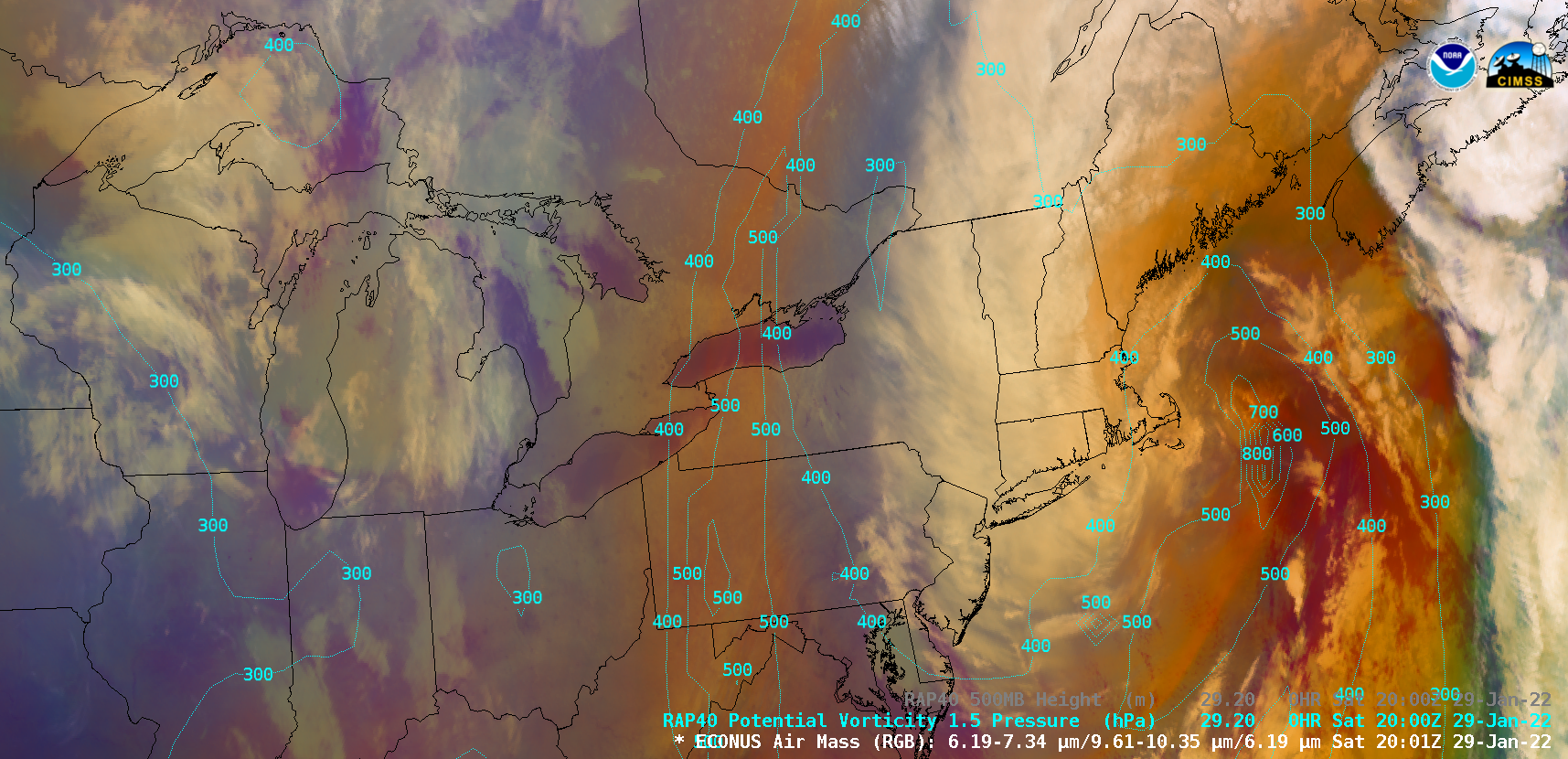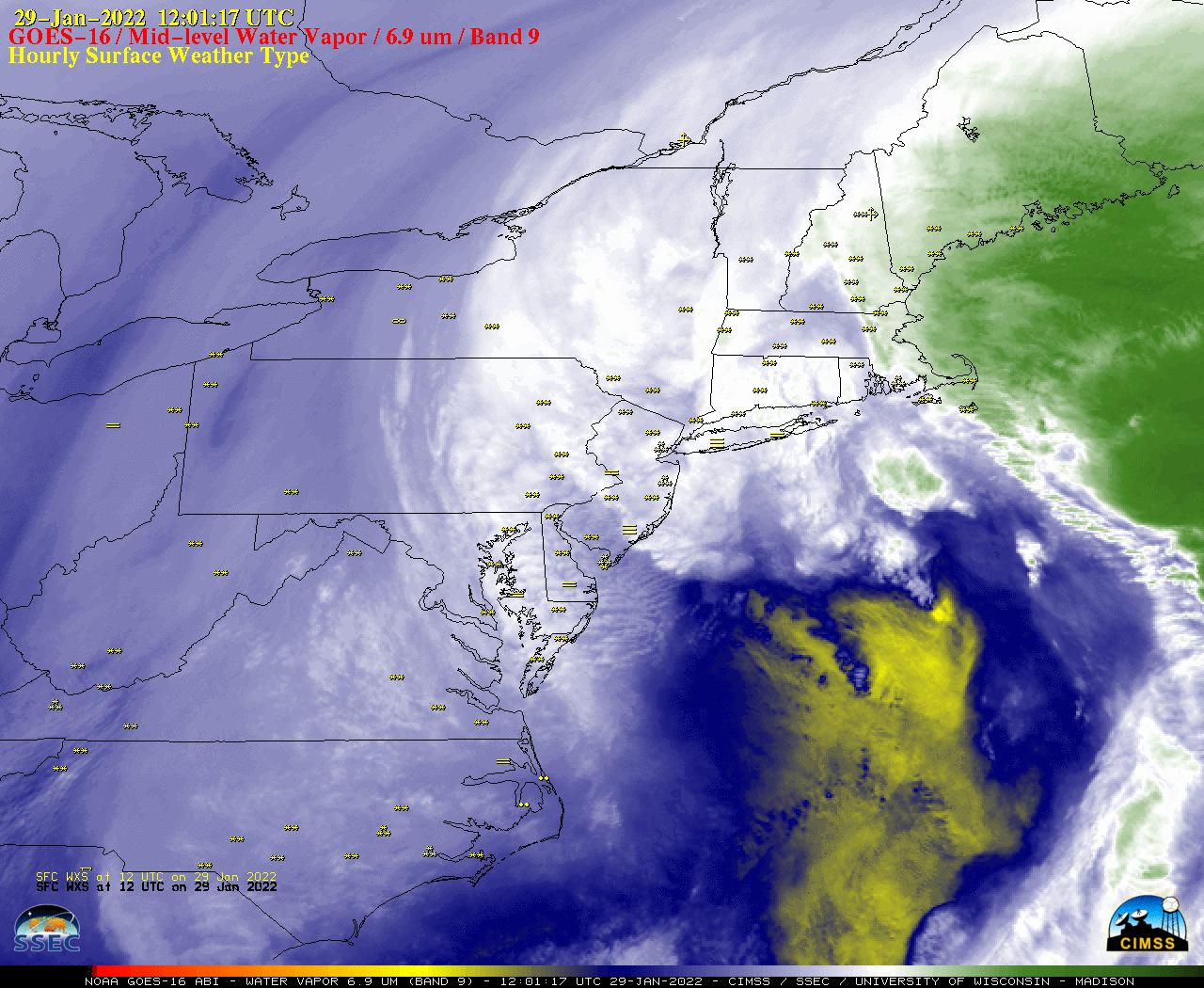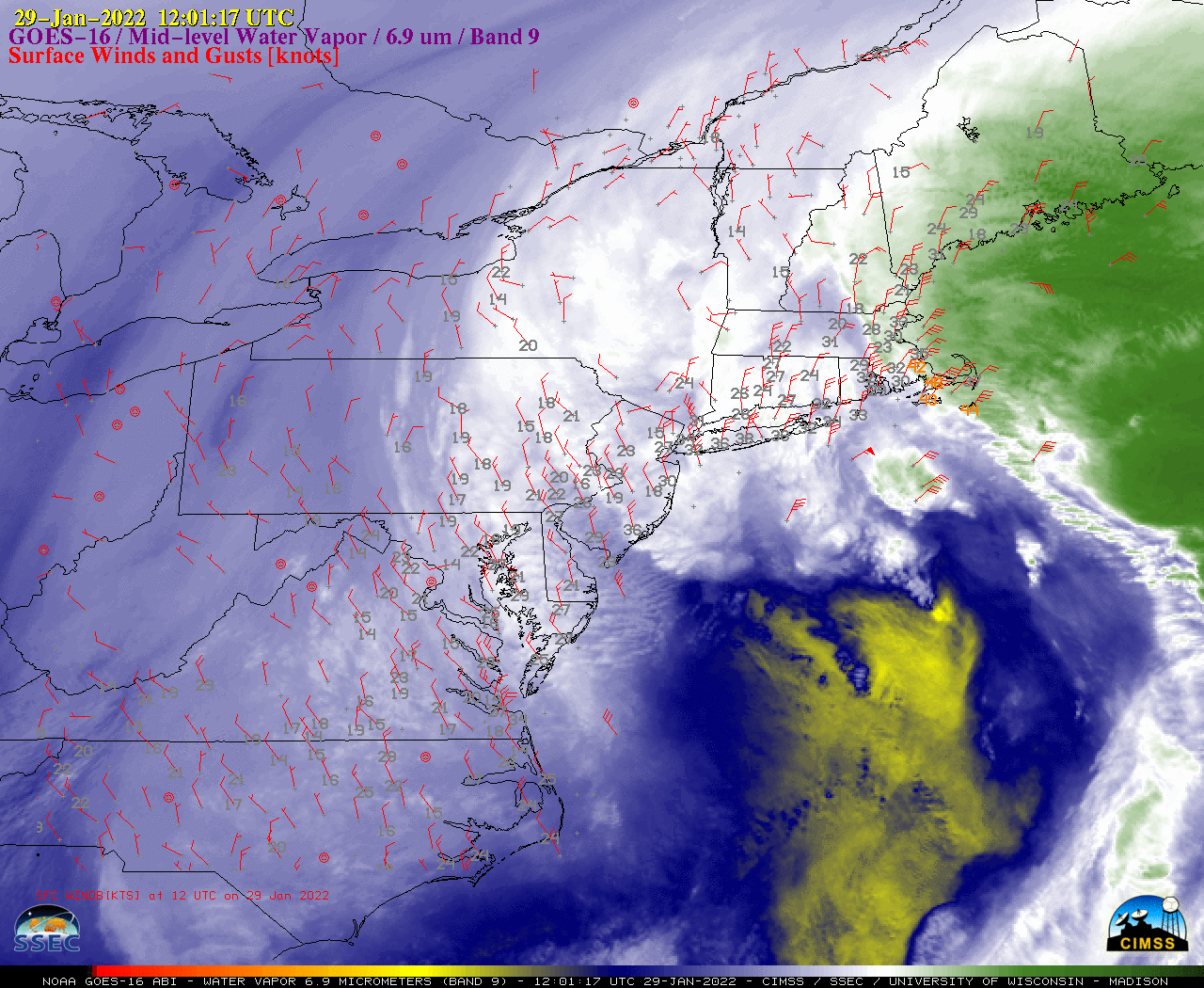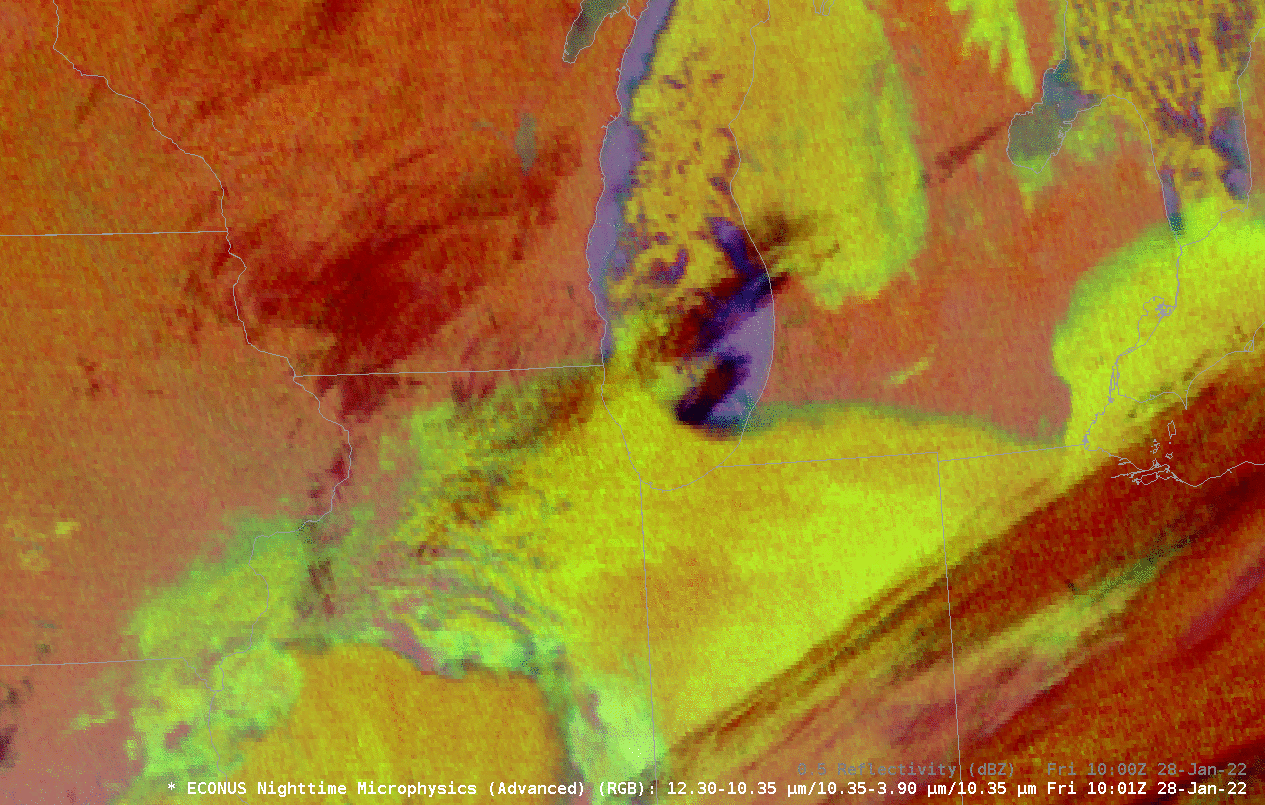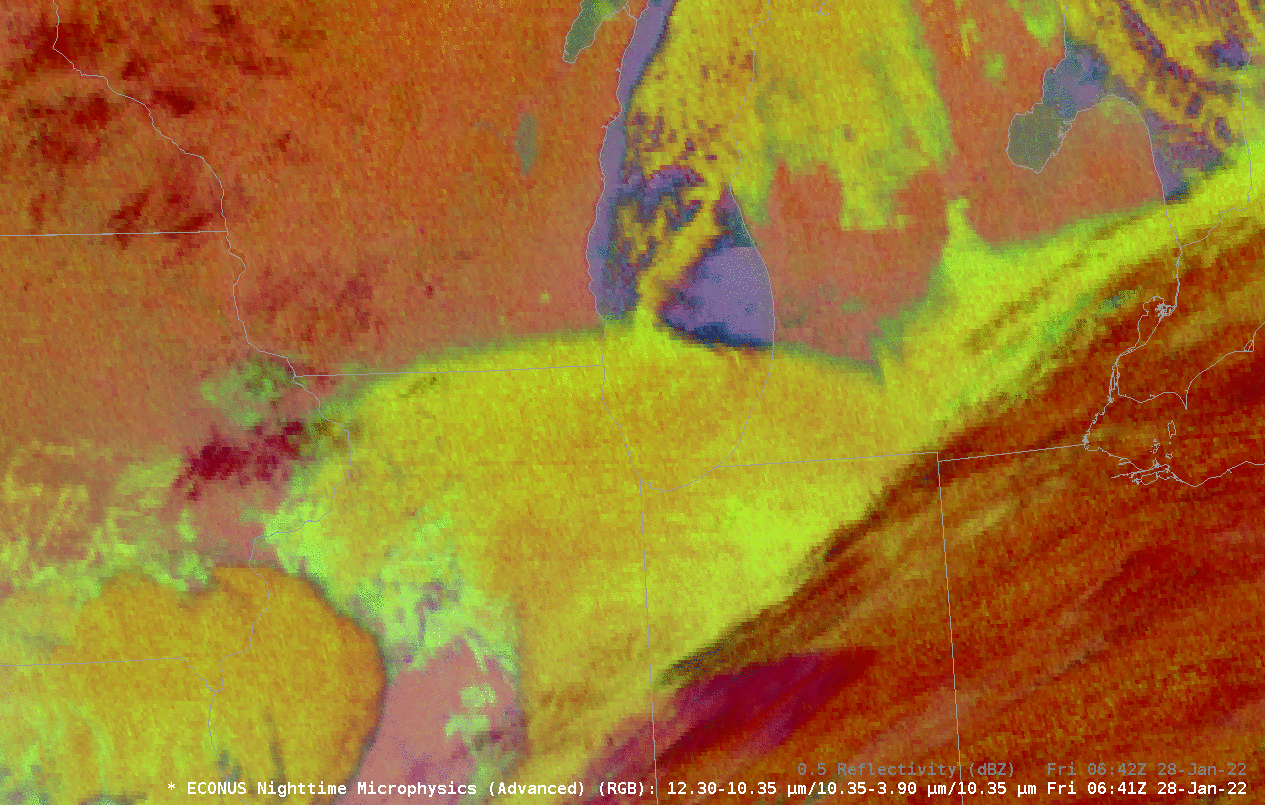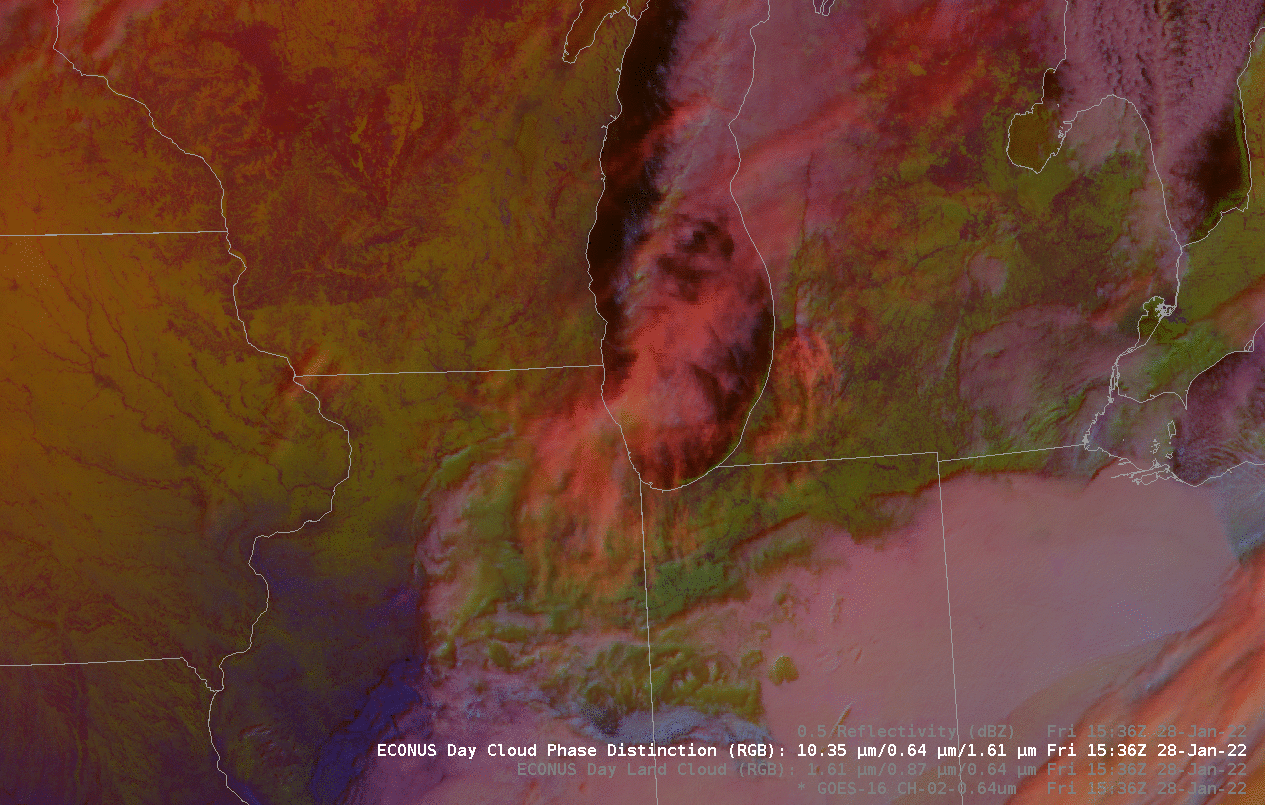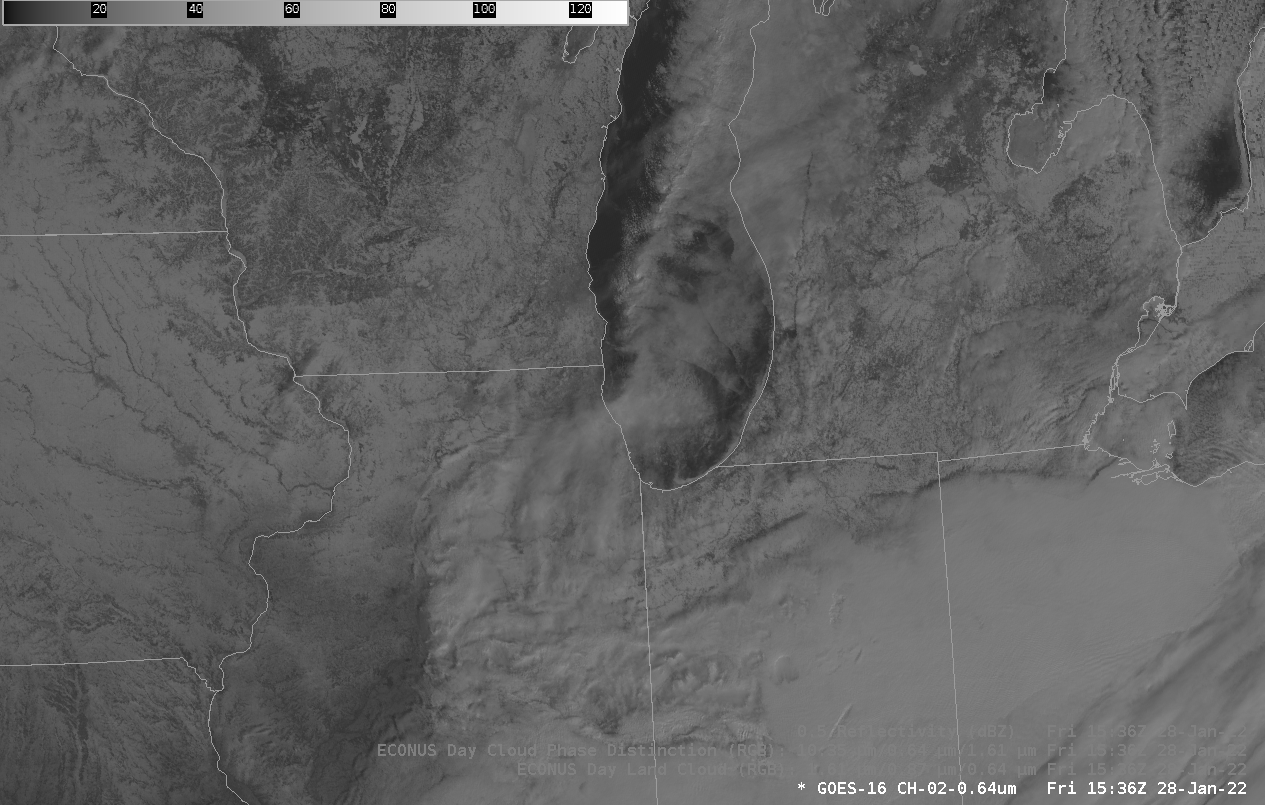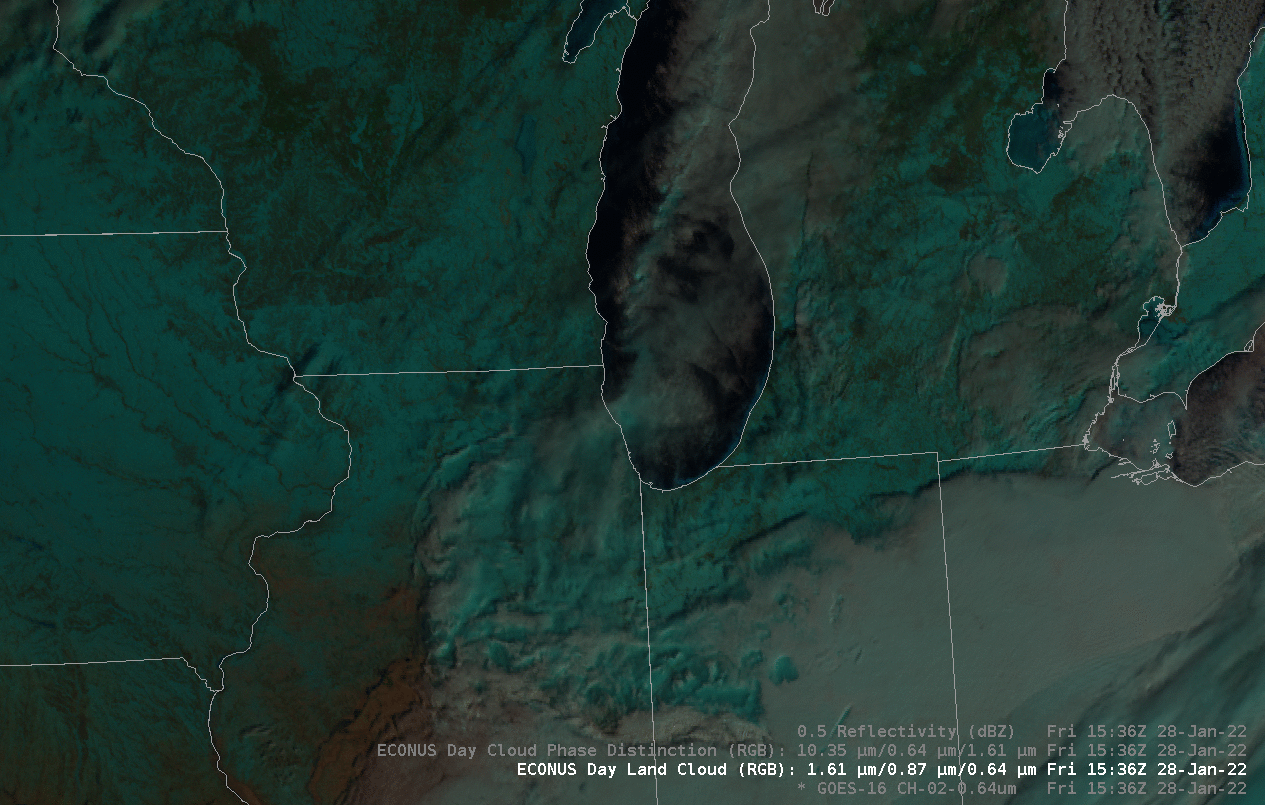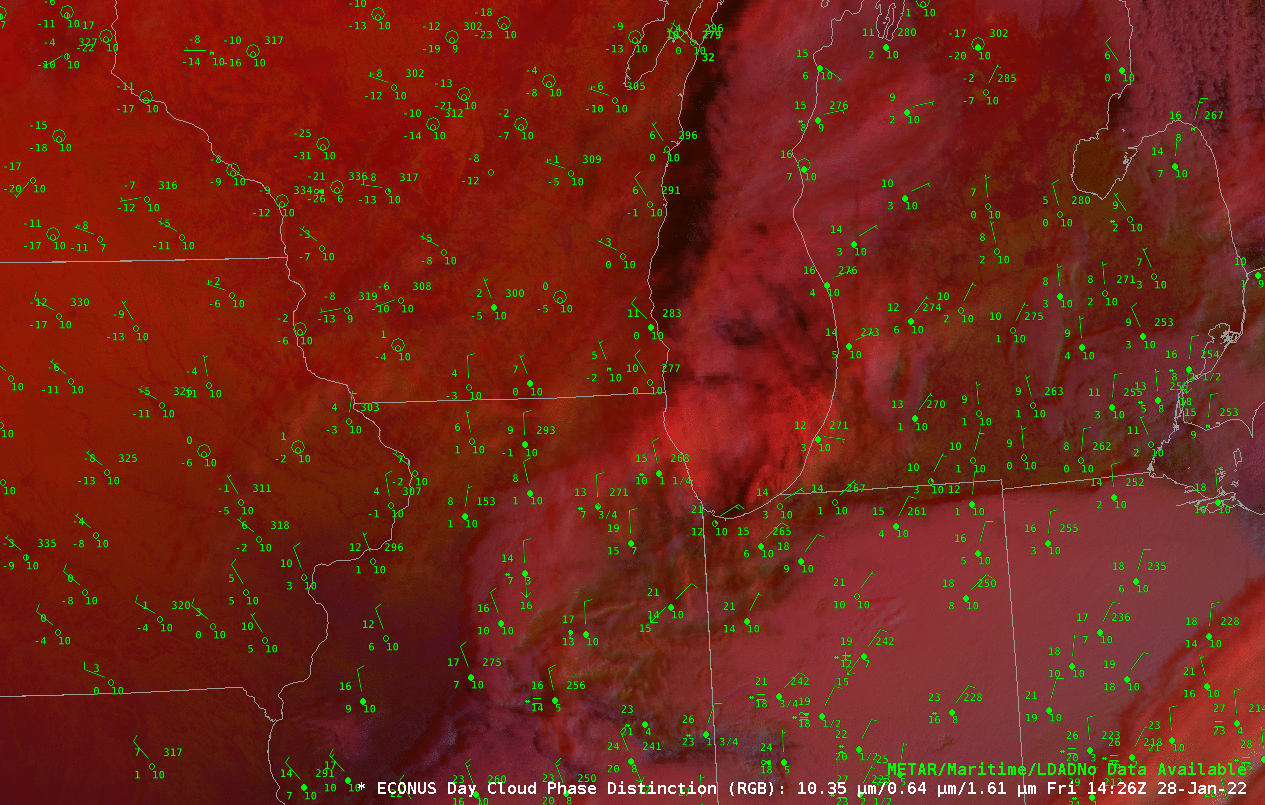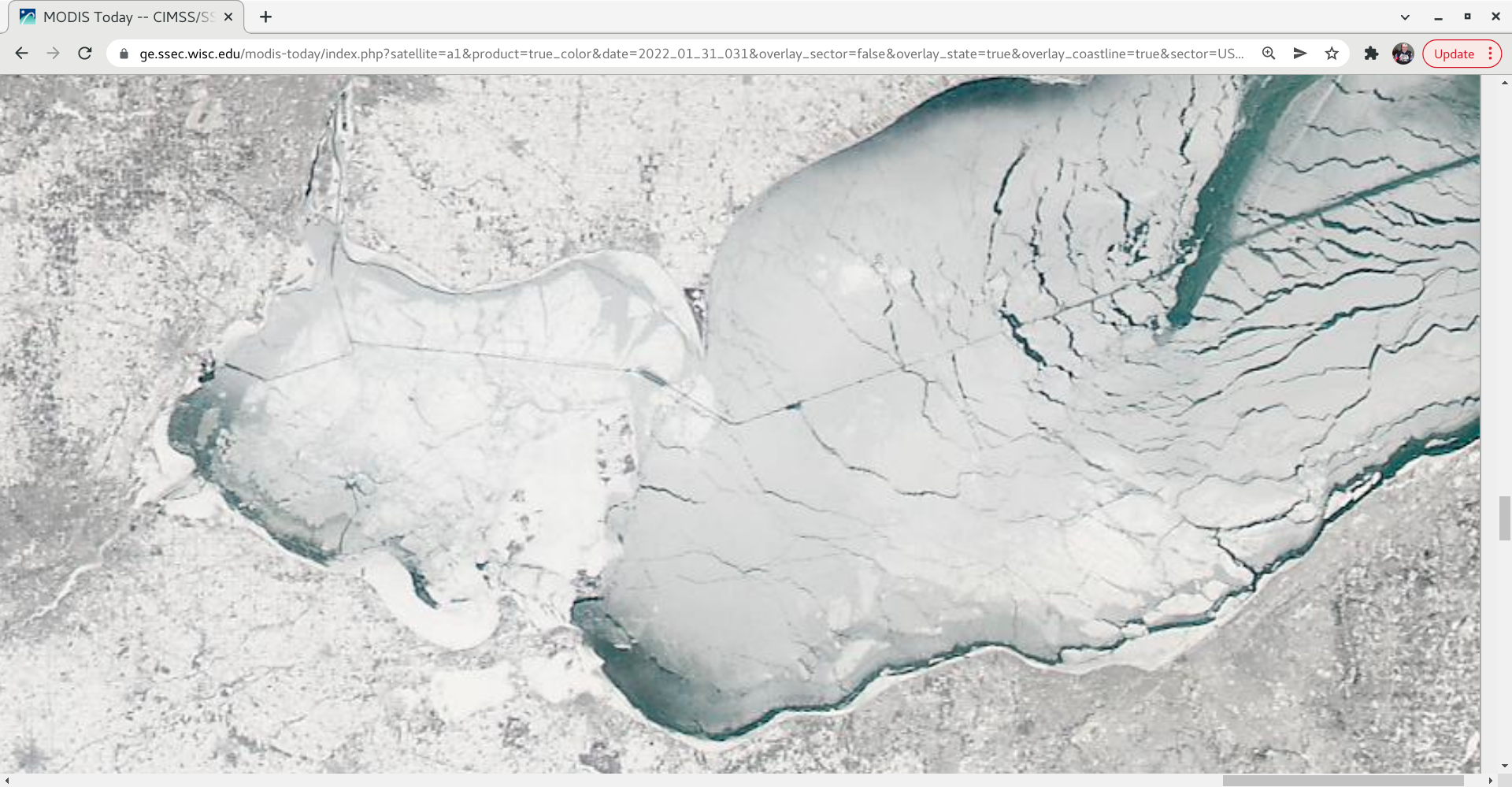
GOES-16 (GOES-East) “Red” Visible (0.64 µm) images (above) showed the widespread coverage of ice across Lake Erie on 31 January 2022. Surface winds were generally light across the region, minimizing wind stress on the pack ice. A careful inspection of the imagery revealed some straight pathways cut through the ice by US... Read More

GOES-16 “Red” Visible (0.64 µm) images, with surface wind barbs (knots) plotted in cyan [click to play animated GIF | MP4]
GOES-16
(GOES-East) “Red” Visible (0.64 µm) images
(above) showed the widespread coverage of ice across Lake Erie on
31 January 2022. Surface winds were generally light across the region, minimizing wind stress on the pack ice. A careful inspection of the imagery revealed some straight pathways cut through the ice by US Coast Guard icebreakers.
An Aqua MODIS True Color RGB image from the MODIS Today site (below) provided a higher-resolution view of the linear icebreaker paths in the western portion of the lake (where the ice was generally thicker).

Aqua MODIS True Color RGB image [click to enlarge]
The entire icebreaker channel was apparently completed sometime before sunrise on 31 January — the western portion was evident in a Sentinel-1A Synthetic Aperture Radar (SAR) Normalized Radar Cross Section (
NRCS) image (
source) at 2324 UTC on 30 January, and its eastward continuation was seen in a RCM-1 SAR NRCS image at 1136 UTC image on 31 January
(below).
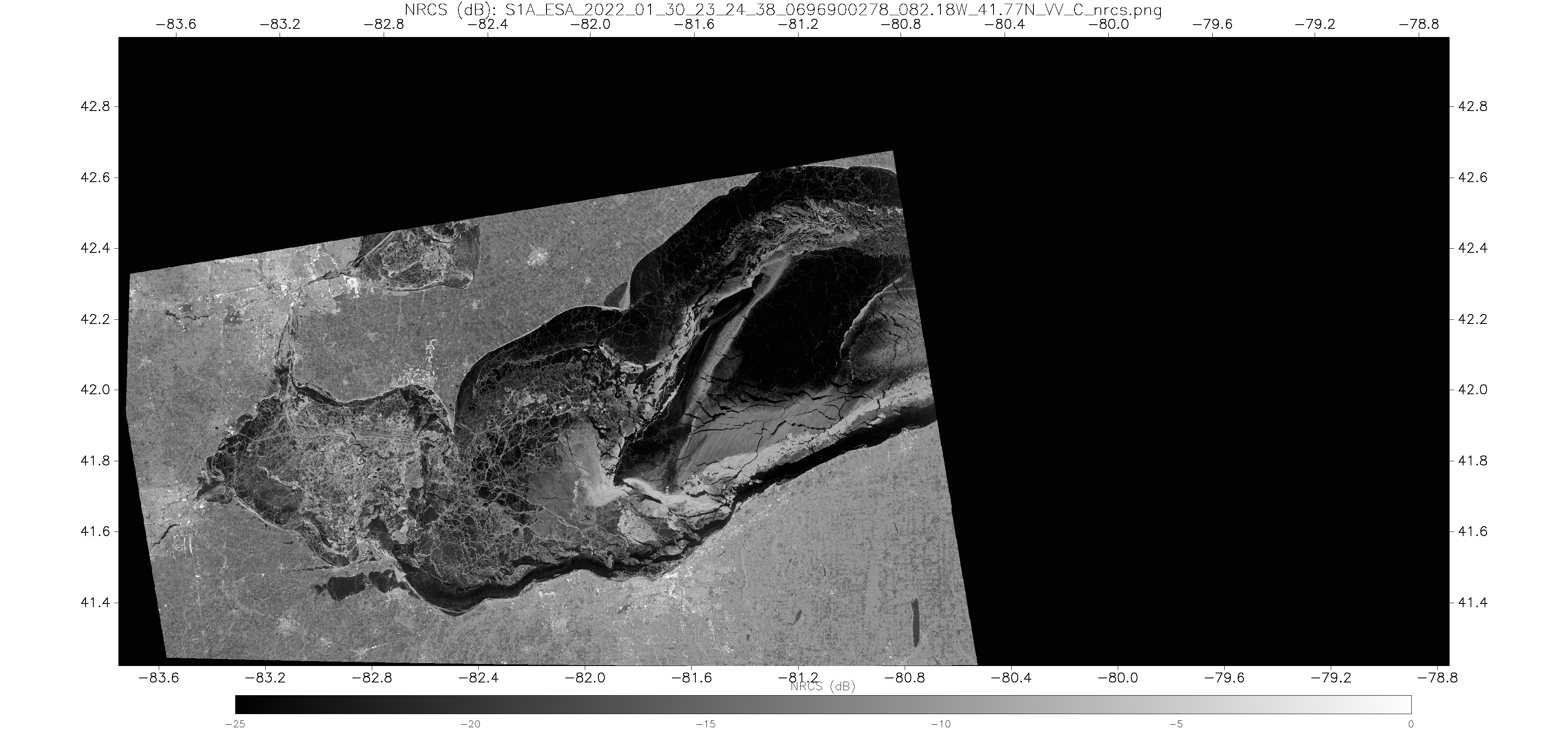
SAR NCRS images from Sentinel-1A at 2324 UTC on 30 January and from RCM-1 at 1136 UTC on 31 January [click to enlarge]
A toggle between GOES-16 Visible images at 1801 UTC on 29 January and 31 January
(below) showed the marked increase in ice coverage during that 48-hour period.
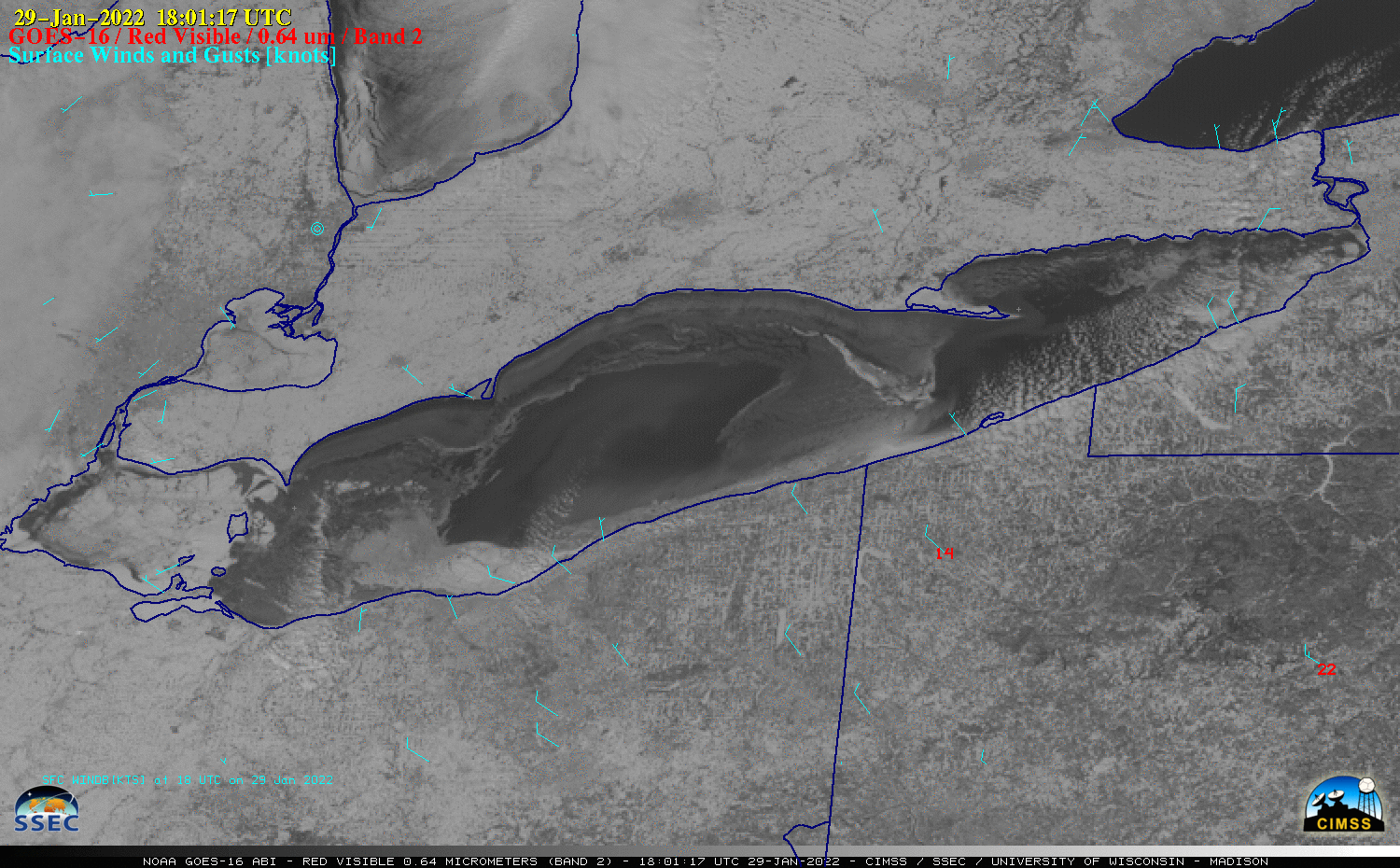
GOES-16 “Red” Visible (0.64 µm) images at 1801 UTC on 29 January and 31 January 2022 [click to enlarge]
In fact, a
GLERL plot of current Lake Erie ice coverage compared to the historical average
(below) showed that the percentage of ice cover had recently become well above average for the date.

Plot of current Lake Erie ice coverage (black) compared to the historical average (red) [click to enlarge]
View only this post
Read Less
